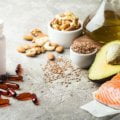Dubai is known as the metropolis of gold. What if I informed you we located an ice cream that did justice to the tag? We provide you with our 11th pick for the month, a 24k gold ice cream.
#11 Gold Ice cream:
If you feel like a king or queen, enjoy some edible gold.
History of gold on food:
Putting sheets of fit-to-be-eaten gold on meals is an ancient lifestyle. Food historians usually agree that using treasured metals to garnish food originated within the Indian subcontinent, unfolding to China and then throughout the Middle East to Europe. Gold was additionally employed as a meal colorant, decoration, and obvious display of wealth.
According to a Harper’s Bazaar article, The Gold Rush, written by Joni Miller in 1992, “Embellishing foods with treasured metals is a centuries-vintage subculture that originated in the East, where it served as an image of hospitality and wealth, a garniture to honor the presence of a unique visitor at the table. Edible silver foil became broadly used by Moguls in India to enhance elaborate arrangements of sweetmeats, kebabs, and unique rice dishes at court docket.
In Europe, a medieval banquet concluded with dramatic slabs of gilded gingerbread dotted with gold-brush cloves. Later, Elizabethans embellished their tables with piles of gold-spangled pomegranates, oranges, and grapes. To this day, Japanese artisans who gild screen gather up their skewings at the end of the workday, blend them in sake, and then sip it all down as a thank-you to the gods for their innovative powers.
However, recently, fashion has taken social media by storm. From chicken wings and sushi to cake, chefs around the arena include suitable items for eating gold in their meals to make them more attractive. Gold leaf is commonly offered in sheets or flakes. Is it edible? Yes. Getting gold as pure as possible, not less than 22 to 24 carats, is counseled as it has fewer impurities and is safe to devour.
Gold passes via the digestive system without getting absorbed with the aid of the body, so it’s miles innocent. However, it does not provide anything to the taste or texture of the dish. It is normally used to look at as a signal of prosperity. Like gold, edible silver is a non-unusual food decoration used primarily in Indian candy making.
The Rolling Luxury
The Rolling Luxury available at Rolling Cones, Hyatt Regency Dubai Creek Heights, is a chocolate and vanilla gentle serve scoop in a waffle cone. This is topped with a thin sheet that fits for human consumption 24 24-karate and chocolate crunchies. At the bottom of the cone, clients can locate Ferrero Rocher sauce with hazelnuts and wafers. The ice cream comes in one-of-a-kind flavors: French vanilla, chocolate, Lotus, and pistachio.
Partner Rajeev Shah stated: “The ice cream represents the whole thing ‘Dubai.’ It is high-priced yet less expensive, and it is what Dubai is known for. We tried to compose that into the ice cream. He mentioned that Dubai is likewise recognized for its distinctive spice souqs, so saffron is used as a garnish for the ice cream after the gold is introduced.
Information:
Where: Rolling Cones at Hyatt Regency Dubai Creek Heights
Availability: Scoop Café has a fit-to-be-eaten gold Sundae, which is Dh2,999. If you’re searching for an outfit to be eaten gold on meals, head to 24 Karat Restaurant at Marriott Hotel Al Jaddaf, Za’abeel, Dubai, and Trophy Room at Fairmont Dubai; Shaikh Zayed Road is your alternative.
Everybody loves ice cream, and we all assume it has usually been around as a cheap deal for the children. Nothing could be further from the fact. Ices were first made for the top training who lived in quality homes and could have an ice house where big blocks of ice could be stored. You’ll find many cheap and joyful examples if you contemplate amassing ice cream molds. Still, if you want to become an extreme collector, you will locate items crafted from silver or silver-gilt, which could cost a pretty penny. A pair of George III silver gilt ice cream serving spades and forks were bought at Bonhams a couple of years ago for £4,800.
The first ice was water ice, regarded in France and Spain in the early 1660s. The first report of ice served in England was at Windsor Castle in 1671. As more ice homes were built at the English Country Estates ices, they became famous and have been regularly served at upper-class dinners. Early versions could be made with cream, sugar, and fruit, and probably flavorings from the center of the 18th-century egg yokes have been added, giving a richer, smoother flavor.
They could have been made in a pewter pot in a wood bucket containing the ice to be a useful resource for freezing. It was then located in hinged pewter or lead molds that had been regularly fruit-formed, like pineapples or lemons. Ice cream is popular in Victorian England, and big portions of ice are imported from Norway and North America for ice homes in human gardens or basements.
Victorian chefs would have recognized how to lead them to dinner events and formed them in molds as culmination or greens—asparagus became particularly famous. Brick-formed molds have been used for Neopolitan ice in unique colorings, and pillars and bombs were well-known. There have been many novelty shapes, including swans, elephants, anarchist bombs, the Statue of Liberty, and Cleopatra’s Needle.












